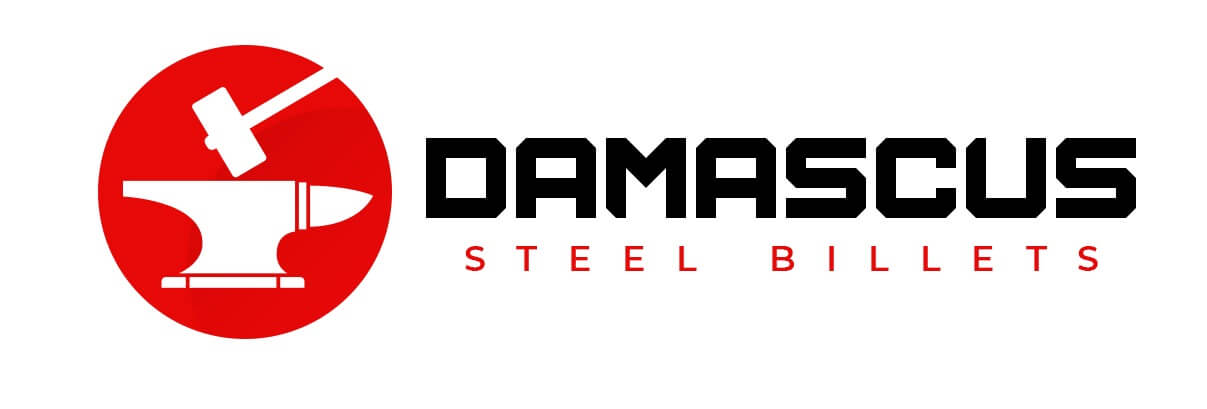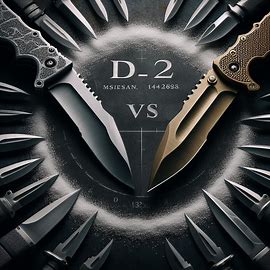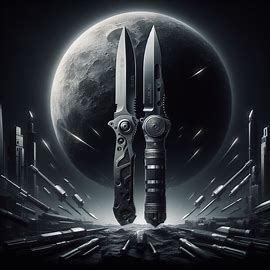Talon Knives and Karambits are two great options when you need a blade, but picking the right one might be difficult. Each knife is well-liked by both amateurs and experts for its own special set of qualities. This detailed guide will help you make an educated selection by exploring the distinctions between these Talon Knife vs. Karambit famous blades.

Talon Knife vs. Karambit
Understanding the Talon Knife and Karambit:
First, before we compare them, let’s get a feel for what makes each of these knives unique.
The Talon Knife:
- With its sleek, futuristic form and distinctive talon-shaped blade, the Talon Knife is a creation of the popular game Counter-Strike: Global Offensive (CS: GO).
- Collectors and players like its nimbleness, sharpness, and user-friendliness.
- The Talon Knife has several tactical applications, such as in self-defense and in adventuring in the great outdoors.
A Karambit:
- With its ergonomic grip and curved blade, the Karambit is a traditional tool from Southeast Asia, namely the Philippines and Indonesia.
- Originally a weapon for self-defense and agricultural purposes, it has since become popular as a utility knife and weapon in battle.
- Slashing, stabbing, and grappling are just a few of the many uses for the Karambit because of its unusual shape.
Comparison of Talon Knife and Karambit
| Aspect | Talon Knife | Karambit |
| Blade Shape | Talon-shaped, straight edge | Curved, claw-like |
| Blade Length | Typically shorter | Often longer |
| Blade Material | Stainless steel, carbon steel | Stainless steel, Damascus steel |
| Handle Design | Ergonomic, often textured for grip | Ergonomic, finger ring for retention |
| Origin | Gaming culture, tactical applications | Southeast Asia, traditional tool |
| Weight | Lightweight | Varies, often heavier due to size |
| Cutting Style | Slashing, precision cutting | Slashing, stabbing, grappling |
| Utility | Tactical, outdoor activities | Combat, utility, self-defense |
| Deployment Mechanism | Manual flip or thumb stud | Manual flip, thumb hole, or Emerson Wave |
| Legal Considerations | Varies by jurisdiction | Varies by jurisdiction |
| Price Range | Moderate to high | Moderate to high |
| Customization Options | Limited | Extensive |
| Maintenance | Requires regular sharpening | Requires regular sharpening |
| Collectability | Popular among gamers and collectors | Popular among collectors and enthusiasts |
| Durability | Resistant to rust and corrosion | Resistant to rust and corrosion |
| Blade Thickness | Typically thinner | Often thicker for strength |
| Grip Material | G10, aluminum, polymer | G10, Micarta, wood |
| Training Availability | Limited | Abundant, many martial arts incorporate it |
| Tactical Advantage | Quick deployment, concealability | Enhanced retention, close-quarters combat |
| Blade Angle | Varies, often straight | Curved for optimal cutting angles |
| Blade Point | Tapered | Pointed for piercing |
| Blade Edge | Single or double-edged | Single-edged, occasionally serrated |
| Maneuverability | Agile, precise movements | Excellent for close-quarters combat |
| Historical Significance | Derived from gaming culture | Rooted in Southeast Asian tradition |
| Maintenance Complexity | Moderate | Moderate |
| Grip Texture | Varies, often textured for grip | Varies, may feature grooves or texturing |
| Deployment Speed | Quick | Quick |
| Blade Finish | Varies, often matte or satin | Varies, may include Damascus or patterns |
| Blade Retention | Good grip, may include finger choil | Finger ring offers enhanced retention |
| Blade Strength | Sturdy, designed for light to moderate use | Sturdy, suitable for heavy-duty tasks |
| Cultural Influence | Popular in gaming communities | Embedded in Southeast Asian culture |
| Blade Flexibility | Limited | Moderate |
| Versatility | Limited to specific tasks | Versatile, suitable for various situations |
| Accessibility | Widely available in gaming merchandise | Available through various retailers |
| Aesthetics | Sleek, futuristic design | Exotic, traditional aesthetic |
| Skill Requirement | Moderate | Moderate |
| Grip Comfort | Depends on material and texture | Depends on material and design |
| Edge Retention | Good, requires regular maintenance | Good, requires regular maintenance |
| Sheath Options | Varies, often included with purchase | Varies, may require separate purchase |
| Blade Length | Typically shorter | Often longer |
| Blade Material | Stainless steel, carbon steel | Stainless steel, Damascus steel |
| Handle Design | Ergonomic, often textured for grip | Ergonomic, finger ring for retention |
| Origin | Gaming culture, tactical applications | Southeast Asia, traditional tool |
| Weight | Lightweight | Varies, often heavier due to size |
| Cutting Style | Slashing, precision cutting | Slashing, stabbing, grappling |
| Utility | Tactical, outdoor activities | Combat, utility, self-defense |
| Deployment Mechanism | Manual flip or thumb stud | Manual flip, thumb hole, or Emerson Wave |
| Legal Considerations | Varies by jurisdiction | Varies by jurisdiction |
| Price Range | Moderate to high | Moderate to high |
| Customization Options | Limited | Extensive |
| Maintenance | Requires regular sharpening | Requires regular sharpening |
| Collectability | Popular among gamers and collectors | Popular among collectors and enthusiasts |
| Durability | Resistant to rust and corrosion | Resistant to rust and corrosion |
| Blade Thickness | Typically thinner | Often thicker for strength |
| Grip Material | G10, aluminum, polymer | G10, Micarta, wood |
| Training Availability | Limited | Abundant, many martial arts incorporate it |
| Tactical Advantage | Quick deployment, concealability | Enhanced retention, close-quarters combat |
| Blade Angle | Varies, often straight | Curved for optimal cutting angles |
| Blade Point | Tapered | Pointed for piercing |
| Blade Edge | Single or double-edged | Single-edged, occasionally serrated |
| Maneuverability | Agile, precise movements | Excellent for close-quarters combat |
| Historical Significance | Derived from gaming culture | Rooted in Southeast Asian tradition |
| Maintenance Complexity | Moderate | Moderate |
| Grip Texture | Varies, often textured for grip | Varies, may feature grooves or texturing |
| Deployment Speed | Quick | Quick |
| Blade Finish | Varies, often matte or satin | Varies, may include Damascus or patterns |
| Blade Retention | Good grip, may include finger choil | Finger ring offers enhanced retention |
| Blade Strength | Sturdy, designed for light to moderate use | Sturdy, suitable for heavy-duty tasks |
| Cultural Influence | Popular in gaming communities | Embedded in Southeast Asian culture |
| Blade Flexibility | Limited | Moderate |
| Versatility | Limited to specific tasks | Versatile, suitable for various situations |
| Accessibility | Widely available in gaming merchandise | Available through various retailers |
| Aesthetics | Sleek, futuristic design | Exotic, traditional aesthetic |
| Skill Requirement | Moderate | Moderate |
| Grip Comfort | Depends on material and texture | Depends on material and design |
| Edge Retention | Good, requires regular maintenance | Good, requires regular maintenance |
| Sheath Options | Varies, often included with purchase | Varies, may require separate purchase |

Frequently Asked Questions (FAQs):
Which knife is better for self-defense, the Talon Knife, or the Karambit?
Ultimately, it comes down to personal taste and training, although both knives may be good self-defense instruments.
Are there legal restrictions on owning or carrying these knives?
You must know local regulations before buying or carrying any knife since they differ by jurisdiction.
Is it safe to use these knives for outdoor pursuits like hiking and camping?
Camping, trekking, and survival scenarios are just a few outdoor activities that call for knives, like the Talon Knife and the Karambit.
Do these knives require special maintenance?
Like any blade, the Talon Knife and the Karambit need to be sharpened and cleaned regularly to keep them in top shape and extend their life.
Which knife is more popular among collectors?
Although both knives have devoted followings, collectors are drawn to traditional workmanship and design will likely be more drawn to the Karambit and game fans to the Talon Knife.
Is it possible to personalize these blades?
You may make your Talon Knife or Karambit exactly as you want it with various customization choices, including blade finishes, handle materials, and inscriptions.
Are there training resources available for learning how to use these knives effectively?
Those interested in studying the safe and effective usage of the Talon Knife and the Karambit may find a wealth of information online and in publications.
Conclusion:
It all boils down to taste, function, and requirements when deciding between a Talon Knife vs. Karambit. Any collection or loadout would be complete with either the Talon Knife’s sleek, modern appearance or the Karambit’s exotic, traditional appeal. Both knives provide distinct characteristics and benefits. To make a well-informed choice and choose the ideal blade, consider things like blade shape, handle design, and intended use.






